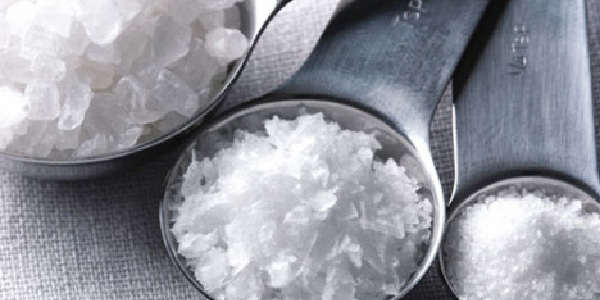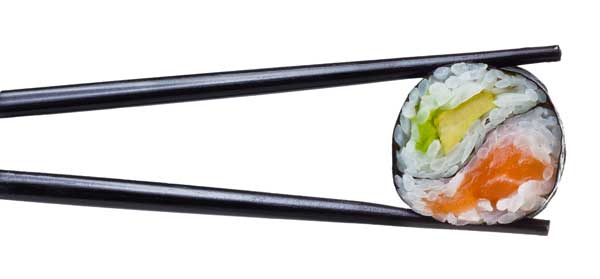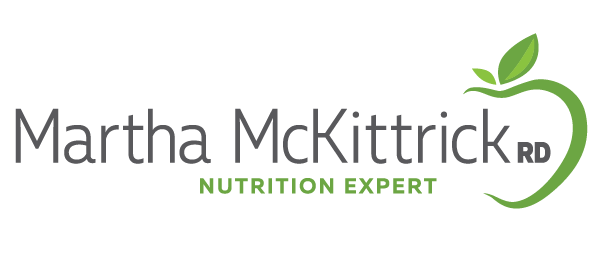Is Sea Salt Healthier Than Table Salt?

 Have you been noticing all the products on the grocery shelves that proudly display “sea salt”on the label? On my recent trip to the supermarket, I was amazed at the huge number of snack foods containing sea salt. Somehow sea salt seems healthier than table salt as conjures up images of the ocean! It kind of got me thinking … is sea salt really a healthier alternative to table salt? Are those organic potato chips containing sea salt more healthful than regular chips?
Have you been noticing all the products on the grocery shelves that proudly display “sea salt”on the label? On my recent trip to the supermarket, I was amazed at the huge number of snack foods containing sea salt. Somehow sea salt seems healthier than table salt as conjures up images of the ocean! It kind of got me thinking … is sea salt really a healthier alternative to table salt? Are those organic potato chips containing sea salt more healthful than regular chips?
Sea salt vs. table salt
Sea salt is often marketed as a healthier alternative to table salt. BUT in reality, they have a similar nutritional content. Both sea salt and table salt contain two minerals: sodium and chloride. The difference between sea salt and table salt is in the processing, taste and texture.
– Sea salt is made through the evaporation of seawater. The minimal processing leaves in more minerals, which can add flavor. In addition, sea salt comes in a variety of coarseness levels. Some sea salt brands contain large and chunky crystals, whereas others are smaller.
– Table salt is mined from underground salt deposits. It undergoes more processing to eliminate other minerals; but it often contains added iodine, an essential nutrient that is not found in sea salt.
Sodium content
 When you compare the two labels it can get confusing! The difference is that the sea salt is chunkier so less fits on the teaspoon and it APPEARS as if it is lower in sodium. But by weight, they contain the same amount of sodium – 600 mg.
When you compare the two labels it can get confusing! The difference is that the sea salt is chunkier so less fits on the teaspoon and it APPEARS as if it is lower in sodium. But by weight, they contain the same amount of sodium – 600 mg.
– table salt contains 590 mg of sodium per teaspoon or 1.5 grams of weight
– sea salt contains 400 mg of sodium per teaspoon or 1 gram of weight
Overall sodium recommendations
Health experts recommend that we limit our sodium intake to less than 2,300 milligrams a day — or 1,500 milligrams if you’re age 51 or older, or if you are black, or if you have high blood pressure, diabetes or chronic kidney disease. It doesn’t matter the sodium comes from – the sea or an underground salt mine – sodium is sodium and will have the same effect on your health.
The bottom line
Beware of these products that tout sea salt as a health ingredient. Many of the products it’s found are far from healthy. For example, putting sea salt on potato chips doesn’t make them a health food. 15 chips will still have 150 calories and 160 mg of sodium whether they contain sea salt or regular salt! The same goes for other snack foods. Sea salt can be a better choice if you enjoy the taste more than table salt or find that you use less because of the larger crystals. But keep in mind that you may also end up paying more. I spotted a little bottle (2.8 oz) of sea salt that costed $13.99! Bottom line, consume all salt in moderation and don’t be fooled into thinking sea salt is a healthier choice!
for other snack foods. Sea salt can be a better choice if you enjoy the taste more than table salt or find that you use less because of the larger crystals. But keep in mind that you may also end up paying more. I spotted a little bottle (2.8 oz) of sea salt that costed $13.99! Bottom line, consume all salt in moderation and don’t be fooled into thinking sea salt is a healthier choice!
RELATED POSTS
Sorry, we couldn't find any posts. Please try a different search.
MEET MARTHA
I especially love problem-solving, whether it’s helping women defeat issues plaguing them for years, helping a busy executive find practical ways to get heart healthy, or providing tips to help you reverse diabetes. That’s why I’m on a constant quest to expand my knowledge by staying on top of the latest research.

20 Ways To Eat Out 550 Calories or Less!
No time to cook? We’ve got you covered. Here are 20 healthy meals from a variety of cuisines that won’t pack on the pounds. Most of them also have less than 30 grams of carbs.
Subscribe to my newsletter and get this free download.

